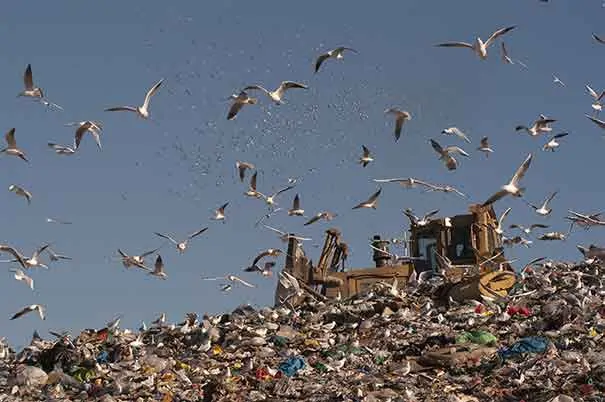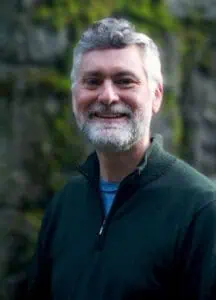


The regulatory driver for reducing bird presence at landfills in Oregon is usually the need to reduce E. coli counts in stormwater as birds carry a range of diseases and landfills are bird feed grounds.
Large aggregations of birds, especially starlings, gulls, and crows can present economic, regulatory, and aesthetic challenges wherever they occur. Lasers have been successfully used to control birds for the agricultural, industrial, power, and commercial sectors for several years.
Lasers used for bird control typically emit green light, a color to which wildlife seem prone to see and react and range up to 500 milliwatts in power (Class 3B), which may equate to effective ranges of beyond 1000 feet. Lasers come in both handheld and automated versions. Handheld lasers allow more flexibility and control in terms of safety and application to particular birds, groups of birds, or situations. Modern automated bird control lasers are basically a security camera housing with a laser as payload instead of a camera, which is programmed to run the laser point along one-to-many set paths. Automated lasers are typically placed on poles or rooftops to allow for maximum range and a good focus for the laser spot on the ground.
We have been evaluating the potential use of handheld and automated lasers for solid waste applications for over a year, mainly for deterring birds from using landfills for feeding and loafing. The regulatory driver for reducing bird presence at landfills in Oregon is usually the need to reduce E. coli counts in stormwater. SCS recently teamed with Bird Control Group, a developer and manufacturer of laser units specifically designed for bird control, and Douglas County Department of Public works to install an automated laser at Roseburg Landfill, Roseburg, Oregon. Initial results are promising, with most birds leaving the site within a few hours of activating the laser.
The collection of daily bird presence data by landfill staff for the last year will help determine the short- and long-term effects of the recent laser installation. SCS will discuss the technology, safety, methodology, science, applications to the solid waste industry, and ongoing results and challenges of the Roseburg Landfill laser installation at the next SWANA NW Symposium, but you may contact SCS directly.

Shane Latimer, Ph.D., CES, SCS Engineers
Shane Latimer is an environmental planner, ecologist, and toxicologist with over 30 years of experience in environmental assessment, planning, permitting, implementation; and compliance; 24 years in the solid waste industry. His specialty is developing projects that challenge the interface between the built and natural environments, such as solid waste facilities, oil and gas infrastructure, mines, sewage treatment facilities, and similar developments. These projects often require careful assessments of alternatives, impacts, and opportunities to successfully navigate the applicable public regulatory processes (e.g., NEPA, local land use, etc.) and ensure environmental integrity.